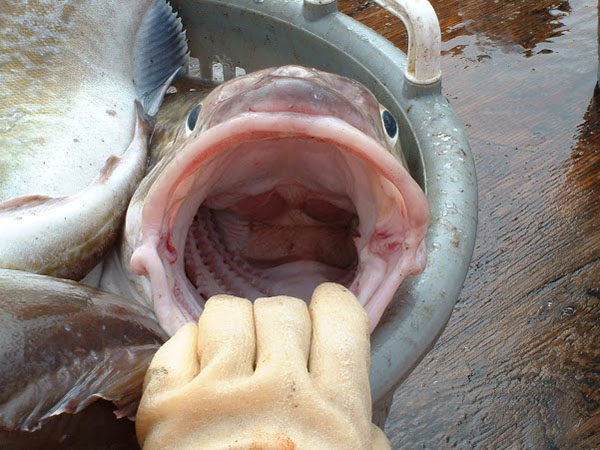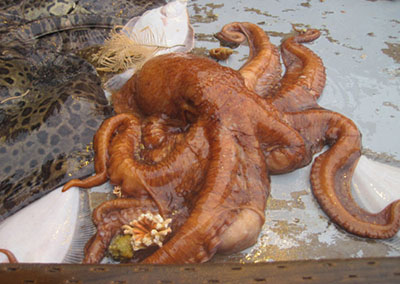
|
March 28, 2016 |
Contact: Maggie Mooney-Seus
Marjorie.Mooney-Seus@noaa.gov
206-526-4348 (office), 774-392-4865 (cell) |
New Web Tools to Examine What Fish are Eating and Track Marine Ecosystem Trends
 |
| Let's see what's inside this cod's tummy? Photo credit: NOAA Fisheries |
Most comprehensive database of Alaska predator diets; First ecosystem report card for Gulf of Alaska
Today, NOAA Fisheries officially rolled out two new databases that make it easy to access comprehensive, long-term diet data for key Alaska marine fish species and to track ecosystem trends for four large marine ecosystems that surround Alaska. Researchers can use these resources to more fully understand predator-prey relationships in the ocean and managers can use them to help sustainably manage marine resources.
?We?ve been collecting diet data in collaboration with the University of Washington for over 35 years for some 140 Alaska fish species, and now we?ve made it easy for scientists around the world to use these data for their own research,? said Kerim Aydin, manager for the Alaska Fisheries Science Center?s Resource Ecology and Ecosystem Modeling Program. ?We?ve also tried to present these data in a way that is useful to fishermen, Alaska Native communities, members of the environmental community and teachers to help inform their business planning and educational programs.?
| |
 |
| Scientists learn about octopus abundance by sampling cod stomachs. |
The Resource Ecology and Ecosystem Modeling Groundfish Diet Data Tool includes a database of every prey type found in the stomach of key marine fish species ? over 1 million records of individual predator/prey interactions ? caught during NOAA research surveys in Alaska waters. For some species, these data date back to the early 1980s.
?We can learn a lot from these data. For instance, food habit data helps us better understand how ecosystems work. They can even help us monitor fish populations that are difficult for our research gear to sample,? said Aydin.
One example is octopus. Scientists have a hard time catching octopus in research trawl nets and other fishing gear. This makes it challenging to determine the size of octopus populations in the ocean and determine how well they are doing. In the Bering Sea/Aleutian Islands, cod consistently eat octopus. By looking at cod stomachs from this area over 30 years, scientists have been able to estimate production and mortality rates of octopus and determine precautionary fishing limits for octopus in the region.
For the past 20 years, the Center has also been pulling together various ecosystem data to inform ecosystem-based fisheries management. This year, it also released the first ?report card? to track ecosystem trends in the Gulf of Alaska, similar to report cards previously developed for the eastern Bering Sea and Aleutian Islands.
The Alaska Marine Ecosystem Considerations Database includes annually updated news about environmental and other conditions that may be affecting Alaska marine ecosystems, including the eastern Bering Sea, the Gulf of Alaska, the Aleutian Islands and the High Arctic. It also includes detailed assessments of ecosystem condition and handy report cards that provide a snapshot of the status for a variety of ecosystem indicators such as predator abundance, seabird reproductive success, human socio-economic factors, plankton size and more.
 |
| Glass squid, a tasty prey for pollock, cod and other fish. Photo credit: NOAA Fisheries |
?The possibilities for how these data may help advance science, resource management and classroom learning are limitless. It?s great to be part of an agency that can make data like this accessible to so many people,? added Aydin.
NOAA?s mission is to understand and predict changes in the Earth?s environment, from the depths of the ocean to the surface of the sun, and to conserve and manage our coastal and marine resources. Join us on Twitter, Facebook, Instagram, and our other social media channels.
Another resource that may be of interest is the Stomach Examiner's Tool: An online tool for identifying Alaska prey including detailed pictures of prey parts most often found in fish stomachs: http://apps-afsc.fisheries.noaa.gov/REEM/SET/index.php
pdf version of this press release
|